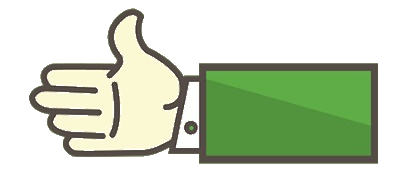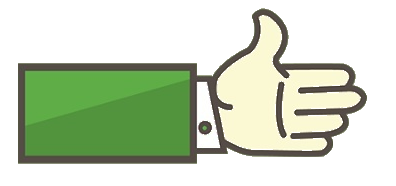Brief Introduction
What is a security surveillance system?
A security surveillance system is a system used to help companies and organizations to organize and execute patrol and guard tours in desired areas, ensuring that security guards perform their duties within predefined time intervals.
Security monitoring systems provide a reliable means of verifying and concretely recording the time in which a security guard conducts his patrol shift, by scanning certain checkpoints assigned to the area he is patrolling. Security guards can scan checkpoints, send SOS alerts, and track and record events. In fact, they can prepare and send reports in real time to the management.

What indstries can use this system?

Many different industries can benefit from this system, including:
- Security companies to monitor security guards/employees who work alone and to manage security shifts and send reports.
- Educational institutions to increase the safety of students.
- Real estate organizations to protect their buildings from damage.
- Public transport services to better target activities and manage daily incidences.
- Financial institutions to avoid external threats.
- Firms holding warehouses to ensure the security of their goods.
- Cleaning and maintenance services to manage workers.
1. SIMPLITY
Using this system responsibly, it eliminates the time lost by filling in and writing reports on paper, there is no need to keep all data in written format, it removes the time and space used for archiving. Security guards send reports with the touch of buttons on a smartphone, and the monitoring center automatically receives all the information.
.
2. RESPONSIBILITY
Even though there are strict rules in providing reports and other necessary documents, there is no reliable method of managing this procedure without wasting information or precious time. Doubts may be given at any time at any stage of the patrol process:
- What was the exact time a guard executed the patrol shift?
- How many checkpoints were skipped and why?
- Were there any contingencies that were not mentioned on the paper reports?
- What are the time intervals during which a security guard scanned the checkpoints?
- And many more.
All of the above causes numerous problems. For this reason, QR-Patrol comes to help and successfully manages to answer all these questions.
3. AUTOMATIZATION
Using a modern security monitoring and surveillance system, facilitate the daily work of security guards. They only use a mobile app installed on a smartphone and with a few taps on the screen they can scan checkpoints, send SOS alerts or messages, even send images and audio recordings, to which they can add the signature to their reports in real time.
On the other hand, the monitoring center (dispatch) will no longer have to wait for the paper reports and will receive real-time notifications about the position and activity of the security guards. Reports can be configured to be sent in real time to customers, improving the relationship between companies.
4. KEEPING THE HISTORY
A security monitoring system helps you get accurate historical data for all patrol tours executed within certain time intervals. Accurate and real-time data provides flawless information about any aspect of a patrol shift in relation to incident activities and security guards.
5. FIABILITY
Using a security monitoring system means an increased interest in the way patrol tours are carried out. This can lead to improved performance, increased professionalism and a remarkable attitude from security guards as well.
The installation and use of such a system will make a difference between security guards and how they do their job.
6. DATA ANALYSIS
A surveillance system provides a way to gather, analyze and edit a large amount of information about protected areas and patrol tours executed within them. Such a good system allows, nowadays remote monitoring of data.
7. CORRECT PROGRAMMING
If you’re planning your part-shift strategy, you should first answer a few relevant questions:
- Which security guard will be assigned to each patrol area?
- Will the agents be responsible for specific areas or will the patrol tours be random, and each agent will change the shift daily?
- What method will be used to detect safety problems and measures?
- When will each patrol tour be carried out and what it will be their frequency?
Many of the above questions cannot be answered unless there is an automated monitoring system to structure a plan and patrol programs specific to each guard.
8. GPS MONITORING
GPS is a vital part of any patrol tour to ensure that security guards are at the right location and also to protect them and increase their level of safety. The ability to remotely manage security guards and provide them with protection is the most important thing in the patrol plan.
Integrating patrol tours with the GPS location of security guards means increased reliability for you and your customers, increased efficiency and improved safety.
9. REAL - TIME TRACKING
The constant evolution of the Internet has, fortunately, changed the way patrols are conducted and dissolves ambiguity, by releasing security surveillance systems based on real-time data delivery and acquisition. A Wi-Fi or GSM connection allows instant transmission of incident reports and real-time updating of the guards’ position, status and activities.
Customers can now see their single workers and guards using their smartphone wherever they are and in real time: in their shop, outside their company, in a remote location. Reports can be made, analyzed, edited and distributed immediately to all. At the end of the day, efficiency is key and a monitoring system that includes real-time functionality will help you guaranteed.
10. BUDGET CONTROL
Resources are essential in any business. The investment in personnel and equipment is a priority to run a security business.
Some of the expenses you need to consider are:
- Transportation expenses during guard shifts.
- Equipment costs.
- Additional inspections to check agents.
- Repeated administrative tasks.
- Too many time-consuming tasks.
- Data analysis.
So, a monitoring system is designed to reduce all these costs or even to eliminate them. Such a system will reduce the time spent on all repetitive tasks and allow remote management of locations. Security guards only use smartphones or laptops and send real-time reports.
11. MANAGEMENT OF DISTANCE
One of the most important parameters that a supervisory system has is to exempt managers from the time-consuming procedure of assignment of tasks and simultaneous monitoring of several different territories.
The manager in the office is the person who will decide and assign patrol shifts to agents and their durations, where checkpoints should be located and whether they are correctly scanned or ultimately missed. He plans patrol tours to meet safety and security requirements and to consistently ensure that none of the locations is in danger.
Especially for large security companies, it is a prerequisite to be able to manage many territories around the world without communication problems.
12. IMPROVED GUARDS PROTECTION
With the help of a patrol system, security guards are more protected than before.
From now on, security guards don’t have to fend for themselves if they’re in danger. They can immediately send an SOS alert at the touch of a button on their smartphone and thus receive the necessary help or assistance in a shorter time. In addition, the monitoring center (dispatch) can send messages to the agent or get a clearer picture of the reported danger (the security guard can send audio recordings or attach images.
13. PERFORMANCE
GPS MONITORING | FIABILITY | AUTOMATIZATION | REMOTE MANAGEMENT | RESPONSIBILITY
All of these make up an extremely effective strategy for any security company. Therefore, the implementation of a monitoring system will increase efficiency and performance, ensuring a high quality security profit.